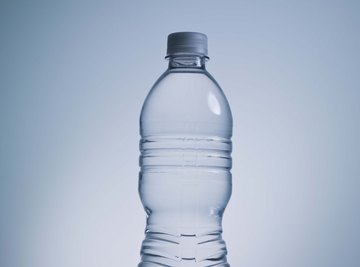
The density of a liquid can be determined through a simple formula, in which density is equal to mass divided by volume. Since the mass and volume of the liquid and its container must be determined before its density can be determined, there is a five-step process for calculating the density.
Mass of the Container
The first step is to determine the mass of the container to which the liquid will be added. Mass is different from weight. Mass is a measurement of the quantity of matter contained in an object and would be the same even in zero gravity. Weight, on the other hand, is a measurement of the amount of pull gravity has over a specific object. So in zero gravity, an object would be weightless. However, a weightless object would still retain its mass. Despite the distinction between mass and weight, mass is still measured on a scale.
Volume
The second step is to add the liquid to the container to a pre-determined level, such as 50 ml. Now the volume can be calculated according to a formula. Volume is equal to pi (which can be shortened to 3.14) multiplied by the radius of the cylinder squared, multiplied by the height of the cylinder. (Pi is the circumference divided by the diameter.) To determine the radius of the cylinder for applying this formula, you can measure its diameter and then divide the result by two.
Mass of the Liquid
The third step is measure the mass of the liquid and the container together by putting the container with the liquid in it onto the scale. This figure now has to be converted into the mass of the liquid alone, so the fourth step is to take the previously measured mass of the empty container and subtract it from the mass for the container and the liquid combined. The resulting figure will be the mass of the liquid on its own.
Density
The fifth step for determining the density of the liquid is to divide the mass of the liquid by its volume. Because mass is measured in grams and volume in cubic centimeters, the result will be expressed in terms of grams per cubic centimeter. The five steps for determining density can be expressed in simple form as follows: measure the mass of the container, measure the volume of the liquid, measure the combined mass of the liquid and the container, determine the mass of the liquid alone and divide the mass by the volume.
References
About the Author
Scott Thompson has been writing professionally since 1990, beginning with the "Pequawket Valley News." He is the author of nine published books on topics such as history, martial arts, poetry and fantasy fiction. His work has also appeared in "Talebones" magazine and the "Strange Pleasures" anthology.
Photo Credits
Jupiterimages/Comstock/Getty Images
